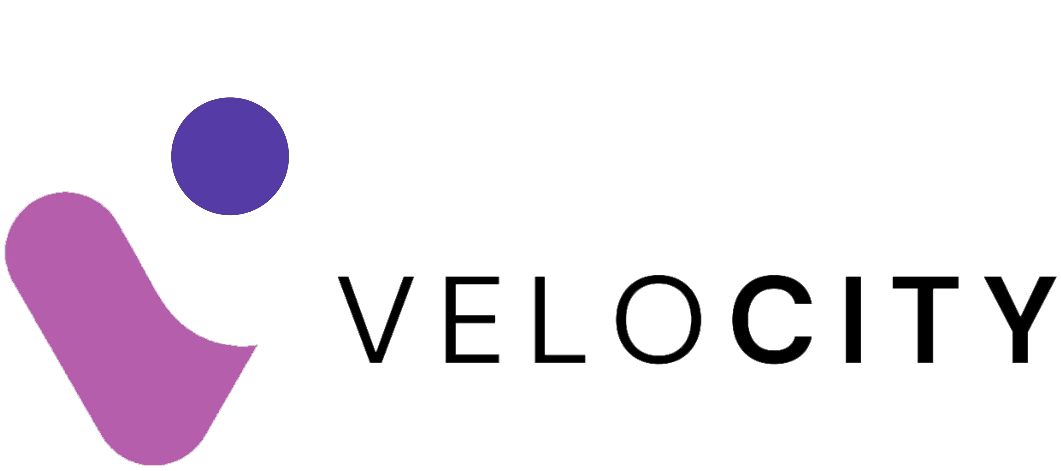Services List
Businesses are constantly looking for ways to improve their lead generation and conversion rates. While inbound marketing, SEO, and paid ads play a vital role, one strategy remains underutilised yet incredibly effective—Direct Outreach.
Direct outreach is a proactive, personalised approach to engaging with potential customers, allowing businesses to cut through the noise and establish meaningful connections. If your B2B sales strategy is heavily reliant on inbound methods, you might be missing a significant opportunity to accelerate growth, shorten sales cycles, and build stronger customer relationships.
-Feb-07-2025-01-53-25-6407-PM.jpg?width=1750&height=875&name=Feature%20images%20velocity_%202500%20x%201500%20(1750%20x%20875%20px)-Feb-07-2025-01-53-25-6407-PM.jpg)
Covered in this article
What is Direct Outreach?
Why Inbound Alone is Not Enough
How Direct Outreach Strengthens Your B2B Sales Strategy
Best Practices for Effective Direct Outreach
Conclusion
FAQs
What is Direct Outreach?
Direct outreach is the process of proactively contacting potential customers through various channels, such as email, LinkedIn, and phone calls, to generate interest and drive sales. Unlike inbound marketing, which relies on prospects finding your content, direct outreach puts your business in control of lead generation by targeting the right prospects with the right message at the right time.
Key Characteristics of Direct Outreach
- Personalised messaging tailored to the recipient’s industry, role, or pain points.
- Proactive engagement rather than waiting for inbound leads.
- Multi-channel approach, leveraging email, LinkedIn, and direct calls.
- Data-driven strategy to target high-intent prospects.
Why Inbound Alone is Not Enough
Many B2B companies invest heavily in inbound marketing—content creation, SEO, PPC, and social media. While these strategies are effective, they have limitations:
- Longer Sales Cycles – Inbound leads often take time to convert, as prospects may still be in the awareness stage.
- Limited Reach – Not all potential customers are actively searching for your solutions.
- High Competition – SEO and paid ads require continuous optimisation to rank higher and maintain visibility.
Direct outreach fills these gaps by actively identifying and engaging decision-makers, allowing businesses to take control of their lead generation instead of waiting for prospects to come to them.
How Direct Outreach Strengthens Your B2B Sales Strategy
1. Faster Sales Cycles
Direct outreach allows businesses to skip the wait and engage with prospects at the right moment, leading to faster sales cycles. Instead of nurturing leads passively through content, direct outreach enables you to directly present your value proposition and address objections in real time.
2. Highly Targeted Lead Generation
With direct outreach, you can identify and engage decision-makers who match your ideal customer profile (ICP). Using data-driven prospecting methods, businesses can reach potential customers who:
- Have a genuine need for the product or service.
- Are in the right industry, role, and company size.
- Have shown intent signals, such as recent funding rounds or job role changes.
This targeted approach increases conversion rates and reduces wasted efforts.
3. Personalised Engagement for Higher Response Rates
Generic outreach results in low engagement, but hyper-personalised messaging drives better responses. By tailoring messages based on:
- The recipient’s company news or challenges.
- Their recent activities on LinkedIn.
- Industry-specific pain points.
Direct outreach makes the interaction more relevant and valuable, leading to higher response rates and better sales opportunities.
4. Direct Relationship Building
Unlike inbound, where prospects consume content passively, direct outreach fosters one-on-one interactions. By engaging in direct conversations, businesses can:
- Establish trust and credibility faster.
- Gain valuable feedback on their offering.
- Nurture long-term relationships that lead to future deals.
5. Cost-Effective Lead Generation
Compared to paid ads or large-scale content marketing campaigns, direct outreach is more cost-effective as it focuses on high-intent prospects rather than spending resources on broad audience targeting.
Best Practices for Effective Direct Outreach
To ensure success, follow these best practices:
1. Research & Build a Quality Prospect List
- Use data-driven tools to identify the right contacts.
- Segment prospects based on their industry, role, and company size.
- Ensure email addresses and LinkedIn profiles are verified to avoid bounce rates.
2. Craft Personalised, Value-Driven Messages
- Address the recipient by name and mention their company.
- Highlight a specific pain point they face and how you can solve it.
- Keep messages short, clear, and action-oriented.
3. Follow Up Consistently
Most deals don’t close on the first interaction. Follow-up emails or LinkedIn messages should:
- Provide additional value (e.g., case studies, relevant insights).
- Show persistence without being pushy.
- Include a clear call-to-action (CTA), such as scheduling a quick call.
4. Leverage Multi-Channel Outreach
- Email for structured outreach and sharing valuable content.
- LinkedIn for warm engagement and personalised connection requests.
- Phone calls for direct conversations and overcoming objections quickly.
Conclusion: The Missing Link to B2B Sales Growth
Direct outreach is not just a sales tactic—it’s a strategic approach that bridges the gap between inbound and outbound marketing. By proactively reaching high-intent prospects, personalising communication, and nurturing direct relationships, businesses can accelerate sales cycles, increase conversion rates, and build a predictable pipeline.
If your current sales strategy relies solely on inbound, you’re leaving revenue on the table. It’s time to integrate direct outreach into your B2B strategy and unlock its full potential.
Ready to implement a direct outreach strategy that drives results? Velocity offers expert Direct Outreach as a Service, helping B2B businesses identify, engage, and convert high-value leads.
Contact us today to discover how our direct outreach solutions can boost your sales growth!
FAQs About Direct Outreach
1. How is direct outreach different from cold calling?
Direct outreach is a multi-channel, personalised approach that includes email, LinkedIn, and calls, whereas cold calling is solely phone-based and often lacks personalisation. Direct outreach focuses on engaging qualified prospects with tailored messages, making it less intrusive and more effective.
2. Is direct outreach better than inbound marketing?
Neither approach is inherently better—they complement each other. Inbound marketing attracts leads over time, while direct outreach allows businesses to proactively engage decision-makers and accelerate sales. A combination of both ensures a balanced pipeline of leads.
3. What industries benefit most from direct outreach?
Direct outreach works well for B2B industries, including:
- SaaS and tech companies targeting enterprise clients.
- Professional services (consulting, marketing agencies, legal services).
- Manufacturing and logistics providers seeking corporate partnerships.
- Financial services and fintech looking for high-net-worth clients.
4. How do you ensure compliance with GDPR and other data regulations?
To comply with regulations like GDPR and CCPA, direct outreach should:
- Only target business contacts, not personal emails.
- Use verified data sources for lead generation.
- Offer clear opt-out options in emails.
- Avoid spammy tactics and prioritise personalised, value-driven messaging.
5. What tools are commonly used for direct outreach?
While we don’t mention specific tools, direct outreach typically involves:
- CRM systems to track leads and engagement.
- Email automation for personalised outreach sequences.
- LinkedIn prospecting tools to connect with decision-makers.
- Lead databases for verified contact information.
6. How can I personalise my outreach without being too salesy?
Effective personalisation includes:
- Mentioning the prospect’s company, industry, or recent achievements.
- Addressing a specific pain point they might be facing.
- Providing relevant insights or case studies instead of just pitching your service.
- Keeping the message brief, clear, and conversational.
7. How many follow-ups should I send?
A good follow-up strategy includes:
- 3–5 follow-ups spaced over 2–3 weeks.
- Using different angles—a new insight, case study, or question.
- Switching channels (e.g., email first, then LinkedIn).
- Ending with a polite break-up email if there’s no response.
8. What is a realistic response rate for direct outreach?
Response rates vary, but well-executed outreach typically sees:
- Cold emails: 10–20% open rates and 2–5% response rates.
- LinkedIn outreach: 20–40% connection acceptance and 10–15% response rates.
- Follow-ups: Often improve responses by 2–3x compared to the first email.
9. What mistakes should I avoid in direct outreach?
Common mistakes include:
- Sending generic, non-personalised messages.
- Overloading emails with too much information or jargon.
- Not following up after the initial message.
- Targeting the wrong audience or not researching prospects properly.
- Using spammy, sales-heavy language without providing value.
10. How do I measure the success of my direct outreach campaign?
Key metrics to track include:
- Open rate: How many recipients open your emails.
- Response rate: The percentage of replies received.
- Meeting booked rate: How many responses lead to scheduled calls.
- Conversion rate: The percentage of leads that turn into paying clients.
- Churn rate: The rate at which leads drop off after initial contact.






